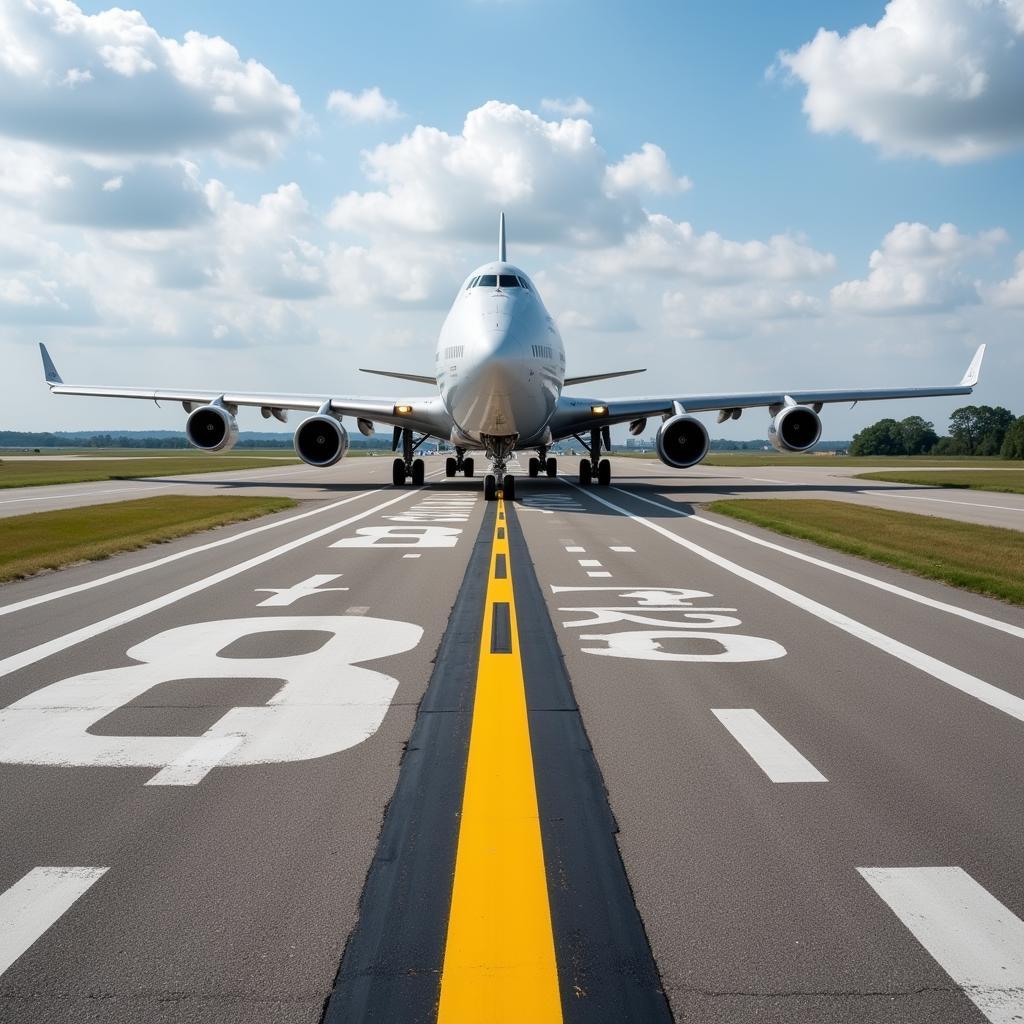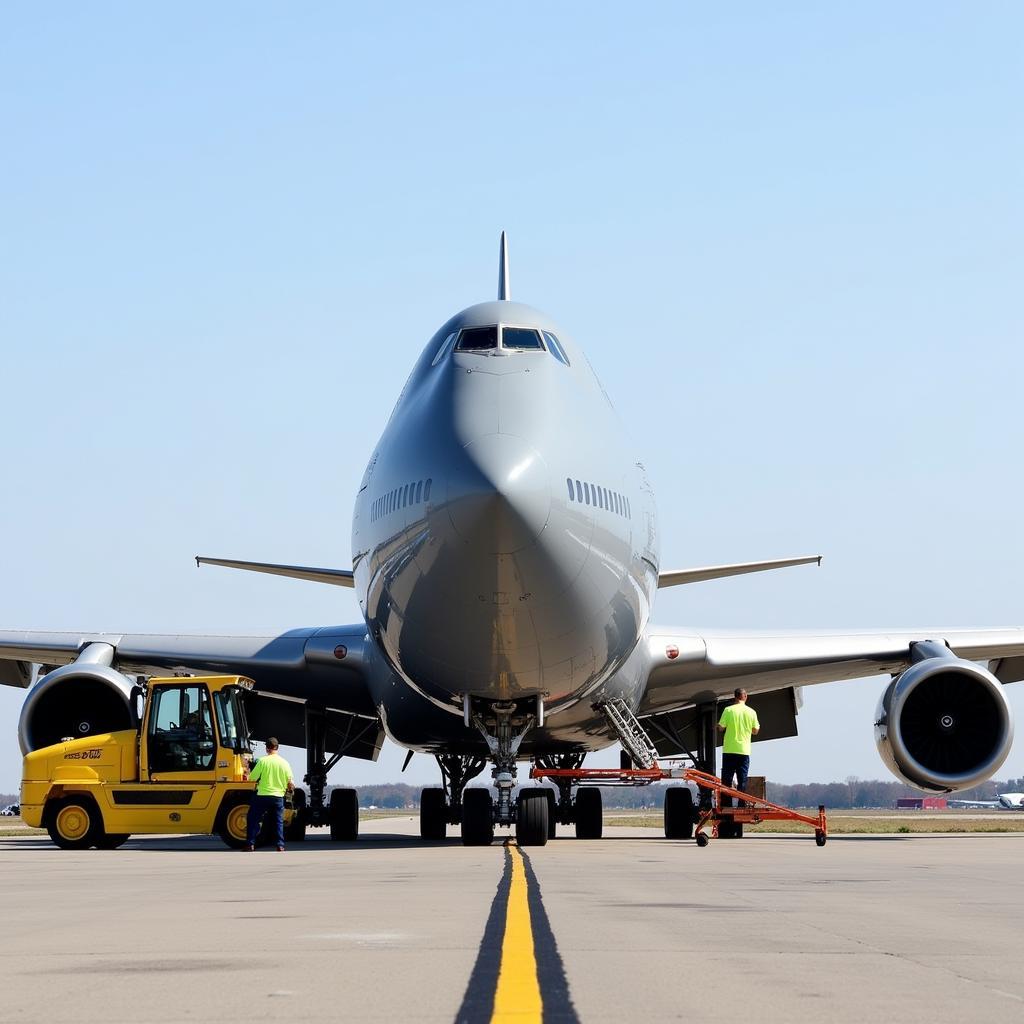The 747-8, a marvel of modern aviation, demands specific considerations for airport operations. This article delves into the intricacies of handling the 747-8 at airports, encompassing infrastructure requirements, operational procedures, and the overall impact this giant aircraft has on airport environments.
Airport infrastructure plays a crucial role in accommodating the 747-8. Runway length and strength are paramount, needing to withstand the aircraft’s significant weight. Taxiway width and turning radii must also be sufficient for the 747-8’s large wingspan. Furthermore, gate compatibility is essential, requiring specialized jet bridges and ground support equipment to service the aircraft effectively. The 747-8 Airport requirements are a significant investment for any airport wishing to accommodate this impressive aircraft.
747-8 Airport Infrastructure Requirements
What specific infrastructure does a 747-8 airport require? Key considerations include reinforced runways capable of handling the aircraft’s maximum takeoff weight, along with appropriately sized taxiways and aprons. Gate areas must be designed with the 747-8’s large wingspan in mind, ensuring smooth maneuvering and safe docking. Specialized ground handling equipment, such as high-reach jet bridges and catering trucks, are also necessary for efficient operations. Similar to how a 4f class airport caters to larger aircraft, the infrastructure must be robust and adaptable.
 747-8 Airport Runway Requirements and Infrastructure Adaptations
747-8 Airport Runway Requirements and Infrastructure Adaptations
Navigating the 747-8 on the Ground
How do airports manage the ground movements of a 747-8? Ground crews utilize specific procedures to guide the aircraft safely. Clear signage and ground markings are crucial for directing pilots, especially during taxiing. Air traffic controllers play a vital role, coordinating movements and ensuring adequate spacing between aircraft. Pushback tugs and towbars designed for the 747-8’s size and weight are essential for maneuvering the aircraft away from the gate. Understanding the complexities of navigating such a large aircraft is vital for safe and efficient airport operations. This intricate dance of logistics ensures smooth transitions between arrival, parking, and departure.
747-8 Airport Compatibility and Future Trends
How are airports adapting to the 747-8 and what does the future hold? While not as prevalent as other aircraft, the 747-8 necessitates specific adaptations. Many major international airports have invested in upgrading their facilities to accommodate this large aircraft, recognizing its role in long-haul travel and cargo transport. As aviation technology evolves, airports are continually assessing future needs, anticipating the demands of even larger or more specialized aircraft. The evolution of 77s airport infrastructure can provide insights into these future trends.
 747-8 Airport Ground Handling Procedures and Equipment
747-8 Airport Ground Handling Procedures and Equipment
Impact of the 747-8 on Airport Efficiency
Does the 747-8 impact overall airport efficiency? The 747-8’s size necessitates careful planning and coordination, impacting various aspects of airport operations. From gate allocation to baggage handling and passenger flow, airports must adapt to accommodate the large number of passengers and cargo associated with this aircraft. Efficient ground handling procedures are critical to minimizing turnaround times and ensuring on-time departures. Similar to the challenges faced by gcts airport, managing large aircraft requires meticulous planning.
“The 747-8 presents unique operational considerations, demanding precise coordination and specialized equipment. Efficient handling is paramount for minimizing its impact on airport operations.” – Amelia Carter, Aviation Operations Specialist.
Environmental Considerations at 747-8 Airports
What are the environmental implications of the 747-8 at airports? Noise pollution is a major concern, especially during takeoff and landing. Airports often implement noise abatement procedures, including designated flight paths and engine run-up restrictions, to mitigate the impact on surrounding communities. Emissions from the 747-8 are also a factor, though advancements in engine technology have significantly reduced their environmental footprint. Airports are increasingly exploring sustainable practices, such as using renewable energy sources and implementing efficient ground support equipment, to minimize the overall environmental impact of aviation activities. Just as discussions around 1 largest airport often include environmental impact, the 747-8’s presence raises similar considerations.
Conclusion
The 747-8 presents unique challenges and opportunities for airports. From infrastructure adaptations to operational procedures, accommodating this impressive aircraft requires careful planning and significant investment. As the aviation industry evolves, the 747-8 airport will continue to play a vital role in global connectivity, necessitating ongoing adaptation and innovation.
FAQ
- What is the wingspan of a 747-8? The wingspan is approximately 224 feet.
- What is the maximum takeoff weight of a 747-8? The maximum takeoff weight is around 975,000 pounds.
- How many passengers can a 747-8 carry? The passenger version can carry over 400 passengers.
- What type of engines does the 747-8 use? It uses General Electric GEnx-2B engines.
- What is the typical range of a 747-8? The range is around 8,000 nautical miles.
- What are the key infrastructure requirements for a 747-8 airport? Reinforced runways, wide taxiways, and specialized ground handling equipment.
- What is the role of air traffic control in 747-8 operations? They coordinate ground movements and ensure safe separation between aircraft.
For support, please contact us at: Phone: +13089626264, Email: [email protected], or visit us at 404 Bothwell St, Oxford, NE 68967, USA. We offer 24/7 customer support.
